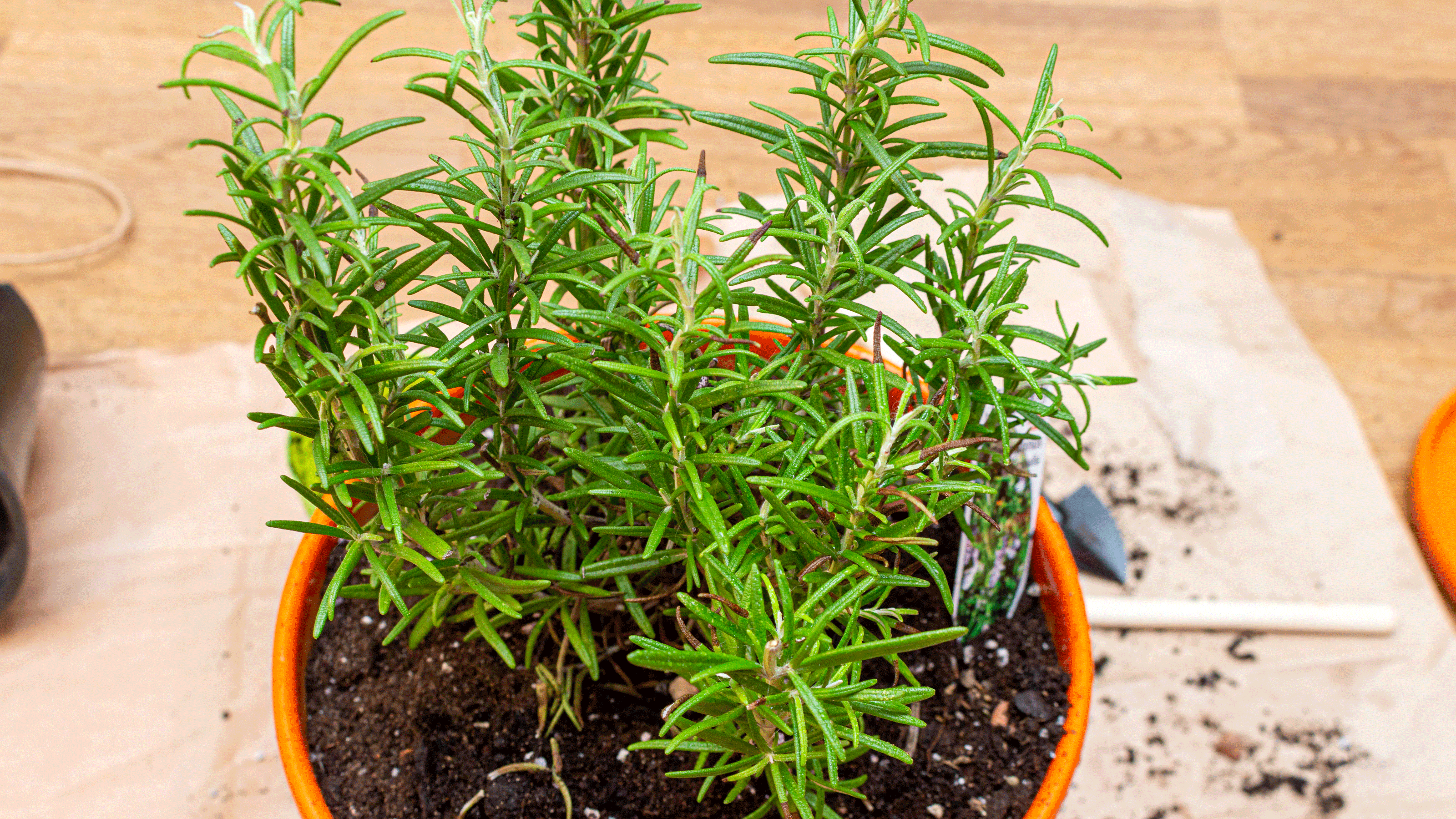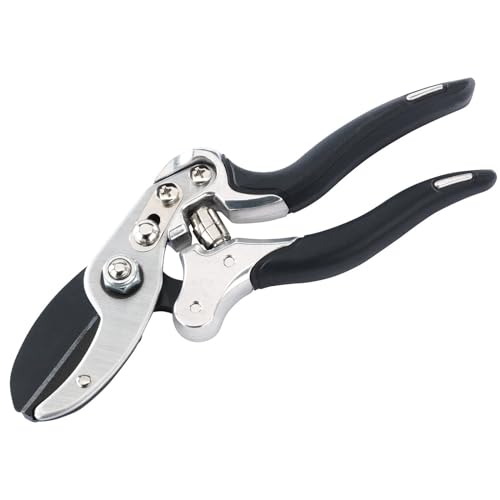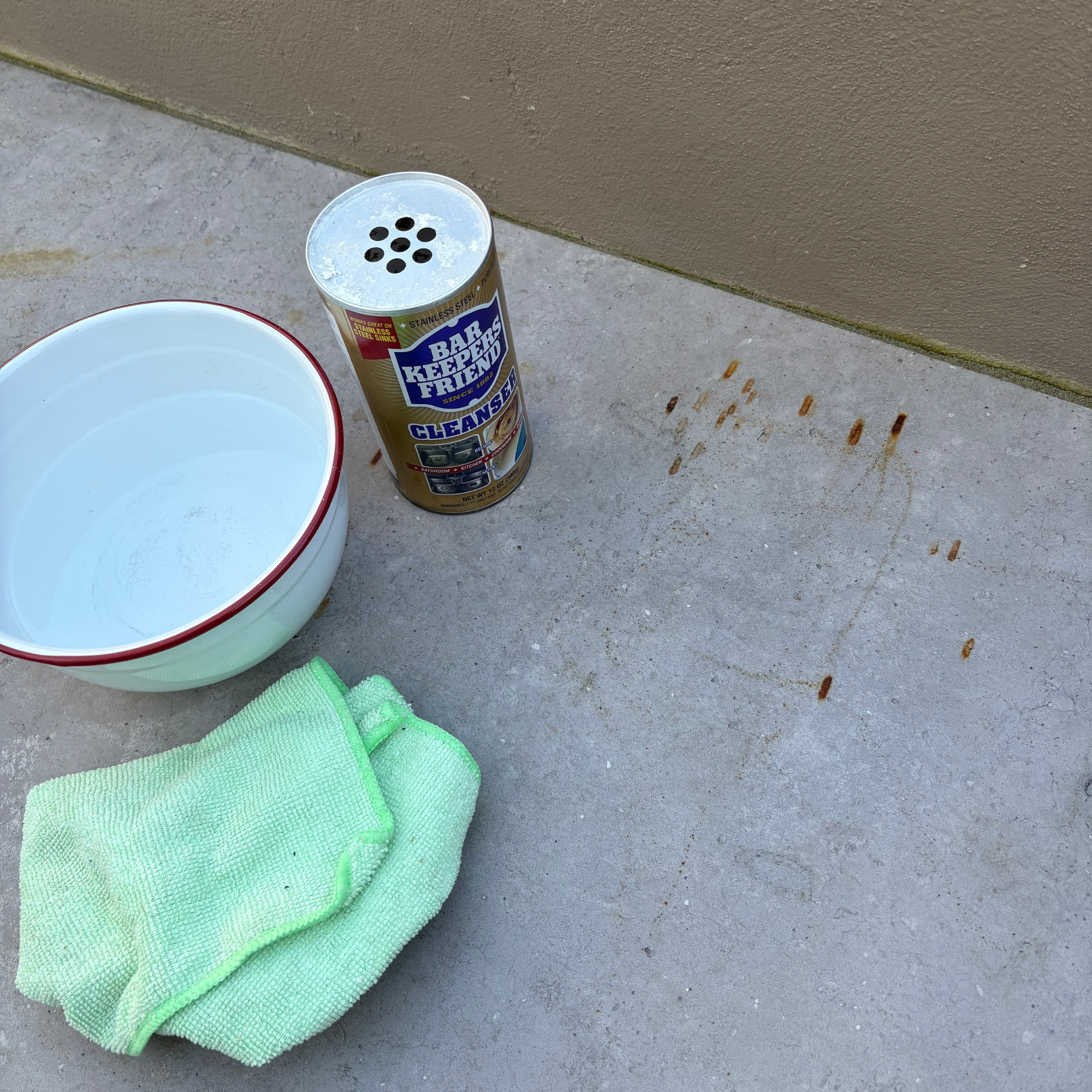How to prune rosemary – 5 tips for fuller, healthier plants
Learn how to prune rosemary for your happiest plants yet


When it comes to herbs, rosemary is one of the first that springs to mind – it's hardy, easy to grow and smells delicious. Learning how to prune rosemary will encourage your healthiest plants yet.
If you've already figured out how to grow rosemary, you'll know how useful it is to have on-side. Once you establish when to cut rosemary back, your plants will be on their way to healthier growth season after season.
A brilliant option for drought-tolerant garden ideas, rosemary originates from the Mediterranean and provides silvery green leaves which are perfect for flavouring meat and vegetables.
We asked garden experts how to prune rosemary to help you get the most out of your plants.
1. Choose the right equipment
To begin with, you'll need to make sure you have the right kit. Knowing how to clean garden tools properly will ensure you aren't spreading diseases between plants.
'All you need is a pair of clean, sharp pruning shears or scissors,' says Claire Hooper, plant area manager at Hillier Garden Centres in Winchester. 'Ensuring your tools are clean helps prevent the risk of disease.'
While hygiene is paramount, the quality of your tools is important, too. 'Make sure the shears haven’t gone blunt so you can easily tackle the thicker branches,' advises Chris Bonnett, owner of Gardening Express. 'The sharper, the better when handling stubborn stems. Always remember to wear suitable garden gloves to ensure you’re protected from any potential injuries.'
Here are our top picks:



A handy garden trug to catch your clippings while you prune.
2. Avoid woody stems
Before you begin, it's important to make sure you know which parts of the plant you should be cutting, and which growth you should leave alone.
'Do not cut into the old, woody stems, as these do not regenerate well,' advises Kate Turner, gardening guru at Miracle-Gro. 'Instead, focus on the newer, green growth.'

3. Know how much to cut back
Knowing how far back you can cut rosemary will ensure you aren't causing unnecessary damage to the plant.
'Cut the plant back by about a third, keeping it bushy and rounded to encourage more branching and shape,' says Claire from Hillier Garden Centres. 'If your rosemary plant is large, prune it in stages to keep it even and manageable.'
Pruning too much at once can also shock the plant, so less is often more if you want to keep your rosemary in good condition. You can lightly trim rosemary throughout the growing season to help maintain its shape.

Claire is the plant area manager at Hillier Garden Centre in Winchester. Her role includes overseeing the day-to-day running of the plant area, as well as managing the plant team. Her love of plants extends further than the workplace – Claire is a passionate allotment holder and spends much of her free time tending to her plot.
4. Remove dead or damaged branches
Check the shrub over for dead or damaged branches. 'Remove any dead or diseased parts to help the plant direct its energy towards healthy growth,' says Claire.
If you're wondering where to make the cuts, there's a simple rule you can follow. 'When trimming, make your cuts just above a leaf node or side branch to encourage new growth,' advises Kate from Miracle-Gro.
You should also cut away any overgrowth, focusing on areas where the plant is dense enough to block airflow. It's a good idea to remove low-lying branches that touch the ground, too.

5. Aftercare
Now you know how to prune rosemary, you might be after some aftercare tips.
'Water the plant well after a heavy pruning session to help it recover and stimulate new growth,' says Kate from Miracle-Gro.
It's also important to collect the trimmings and dispose of them to prevent potential diseases from spreading to your plants.

Kate Turner is Miracle-Gro’s expert horticulturalist who has a deep love of all things plants – from vibrant houseplants to stunning gardens and growing fruit and veg, Kate knows all the tips and tricks for successful gardening.

FAQs
Why is my rosemary so woody?
'Rosemary tends to become woody when not regularly pruned to encourage softer, new growth,' explains Angela Slater from Hayes Garden World. 'Like lavender, it's a woody shrub with a relatively short lifespan, typically needing replacement every decade or so.
'Pruning into old wood isn't effective, so if you allow your rosemary to become excessively woody, it will eventually appear straggly with only sparse new growth at the tips.'
How do you cut rosemary so it keeps growing?
Pruning your rosemary plant every year will encourage healthy new growth, but it's important to keep the plant's natural lifespan in mind.
'Regular trimming will keep your rosemary bushy for longer, with plenty of young growth lower down,' says Annelise Brilli, horticultural expert at Thompson & Morgan. 'However, over time, the point where you can make your cuts will become higher and higher as the older stems become thicker and less productive.
'The shrub will eventually develop into a straggly bush with all the new growth carried on the ends of bare stems. Although regular trimming will delay this, all plants will reach this stage as they age. At this point, your only option is to purchase a new specimen or grow replacement plants from cuttings.'
Can a brown rosemary plant be revived?
'If your rosemary plant has turned brown, it’s time to replace it,' says Nichola Bradley, head gardener at The Lost Gardens of Heligan in Cornwall. 'Regular pruning should help keep your plant healthy, but if it’s struggling to grow then I would look at the growing site – is it well drained with enough direct sunlight? Unsuitable conditions may cause fungal diseases such as root rot, causing the stems to turn brown and die.'
Now you know how to prune rosemary, you'll garner healthier plants for happier pickings.
Get the Ideal Home Newsletter
Sign up to our newsletter for style and decor inspiration, house makeovers, project advice and more.

Sophie joined the Ideal Home team as Gardens Editor in June 2024. After studying English at Royal Holloway, University of London, she began writing for Grow Your Own, which spurred on her love of gardening. She's tried growing almost every vegetable under the sun, and has a soft spot for roses and dinnerplate dahlias.
As Gardens Editor, Sophie's always on the lookout for the latest garden trend. She loves sharing growing hacks for every space, from herbaceous borders to balconies.
-
 Should your front door colour match your hallway? Interior experts reveal 3 reasons why it should (and 3 reasons it shouldn't)
Should your front door colour match your hallway? Interior experts reveal 3 reasons why it should (and 3 reasons it shouldn't)Are you team matching or contrasting?
By Ellis Cochrane
-
 This £200 limited-time discount makes this Dyson vacuum cheaper than I’ve ever seen it - run don’t walk to Argos for this bargain
This £200 limited-time discount makes this Dyson vacuum cheaper than I’ve ever seen it - run don’t walk to Argos for this bargainIt's the most affordable Dyson on the market right now
By Lauren Bradbury
-
 Martin and Shirlie Kemp’s pastel flower beds has given their Victorian renovation a romantic look - how you can get the look
Martin and Shirlie Kemp’s pastel flower beds has given their Victorian renovation a romantic look - how you can get the lookTheir pastel garden is the cottage garden inspo you've been looking for
By Kezia Reynolds
-
 I’m seeing pastel garden furniture at all my favourite brands this spring, but QVC’s sorbet collection impressed me the most
I’m seeing pastel garden furniture at all my favourite brands this spring, but QVC’s sorbet collection impressed me the mostFresh pastel shades are a great way to liven up your outdoor space
By Kezia Reynolds
-
 I spent the afternoon looking through Wayfair's garden sale – these are the 6 pieces I'm buying immediately for summer
I spent the afternoon looking through Wayfair's garden sale – these are the 6 pieces I'm buying immediately for summerThese are my must-have garden buys from the sale
By Holly Reaney
-
 I’ve found the perfect alternative to John Lewis’ sold-out striped garden chair – and you won’t believe where it's from
I’ve found the perfect alternative to John Lewis’ sold-out striped garden chair – and you won’t believe where it's fromJohn Lewis' Sling Garden Chair is one of the most stylish pieces of garden furniture I'd seen – until I tracked down this QVC lounge chair...
By Kezia Reynolds
-
 Lidl is selling a smart tiered planter that will unlock extra planting space in a tiny garden or balcony
Lidl is selling a smart tiered planter that will unlock extra planting space in a tiny garden or balconyWhy I've been eyeing this planter up for my tiny garden
By Kezia Reynolds
-
 I’ve found the best solution for cleaning stains from a patio - and it’s only £8 on Amazon
I’ve found the best solution for cleaning stains from a patio - and it’s only £8 on AmazonThe stains practically vanish!
By Kezia Reynolds
-
 Lidl’s £15 sun sail is everything you need to create a shady oasis in your garden – and it’s on sale right now
Lidl’s £15 sun sail is everything you need to create a shady oasis in your garden – and it’s on sale right nowWith two stylish colours available, the sun sail will make a chic yet practical addition to any of your garden.
By Kezia Reynolds
-
 B&M has nailed 2025's breakout garden furniture trend - it's one of the most affordable and stylish I've seen
B&M has nailed 2025's breakout garden furniture trend - it's one of the most affordable and stylish I've seenGet the luxe look for less
By Kezia Reynolds
-
 I was shocked to discover a treasure-trove of designer-look garden furniture at La Redoute on sale right now – 6 chic standouts
I was shocked to discover a treasure-trove of designer-look garden furniture at La Redoute on sale right now – 6 chic standoutsGive your garden that high-end look
By Sara Hesikova